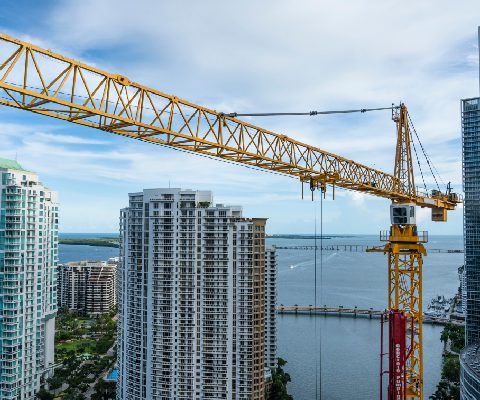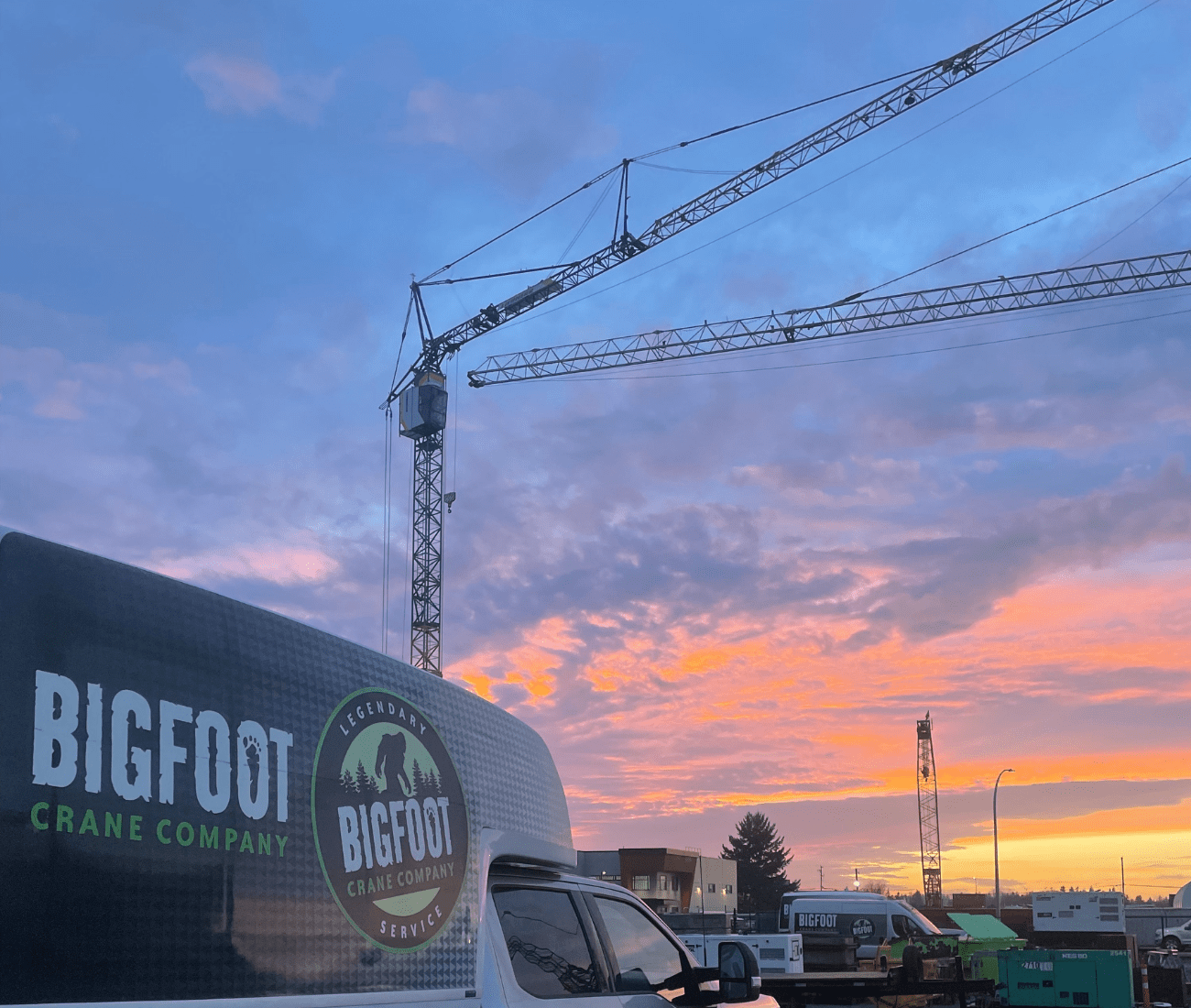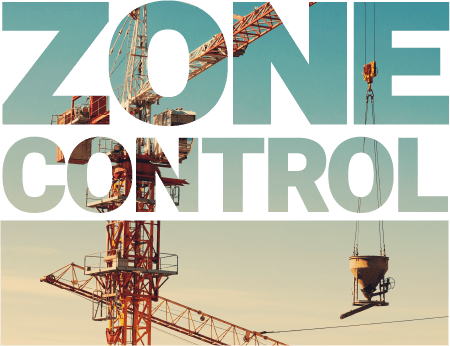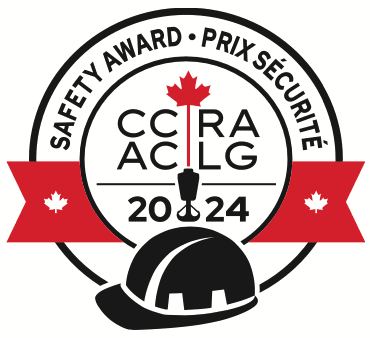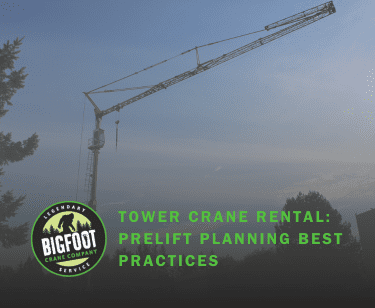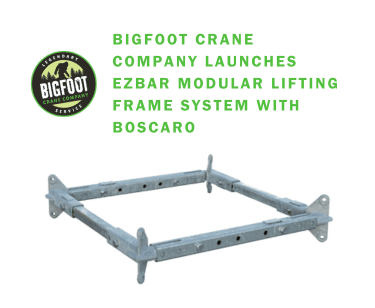In March 2023, WorkSafeBC will implement new regulations for tower cranes in B.C. that will require the use of anti-collision/zoning systems.
This development comes in response to newer technology that helps to ensure the safer use of tower cranes by preventing crane-to-crane collisions and crane-to-power-line collisions. The systems also provide zone control by creating safe barriers in other vulnerable settings, such as close proximity to existing buildings or to traffic.
In the specific language of WorkSafeBC’s Occupational Health and Safety Regulation (OHSR), the anti-collision/zoning systems will be mandated for tower cranes under the following two conditions: 1) when in an overlap situation with an adjacent crane or other equipment (14.49.1); and 2) when operating at a workplace with potential exposure to the limits of approach of electrical equipment (19.24.1).
“These systems work,” affirmed Ryan Burton, Managing Director of Bigfoot Crane Company, and former Board Chair of BC Crane Safety. “They make tower cranes safer.”
Burton witnessed the use of the zoning systems firsthand in the Lower Mainland when they were tested on tower cranes at the Olympic village site in Vancouver in 2010. He became convinced that it was just a matter of time before the systems would become standard within the local tower crane industry, as they already were in Europe.
After Burton insisted that Bigfoot start upgrading their fleet of tower cranes with the zoning systems, the company saw dramatic results. “Although incidents were rare before, maybe 1-2 collisions per year with powerlines,” said Burton, “within two years of using these systems, we completely eliminated those incidents.”
According to Clinton Connell, Executive Director of BC Crane Safety, “The new regulations were expected, and they are certainly well intended. I haven’t heard anyone in the industry arguing against the benefits of using these systems—they are proven safety devices. However, the biggest challenge is the timeline.”
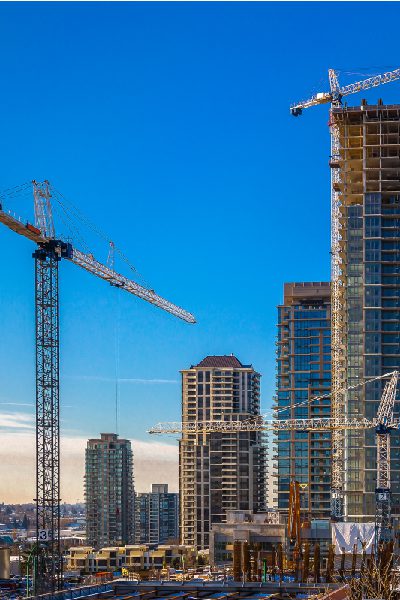
In order for the B.C. tower crane industry to comply with the new regulations, all crane owners and users that will find themselves in the two scenarios outlined in the OHSR must ensure that their cranes are not only equipped with anti-collision/zoning systems by March 2023, but that they are fully approved by a professional engineer.
“Brand new cranes are plug-and-play ready for these new systems,” said Connell. “The electrical schematics come fully compatible from the OEM. In that case, the owners just need to find a trusted vendor to install the new system and get sign-off from an engineer.”
However, the process to compliance becomes complicated when cranes are not technically ready for the newer systems.
“It completely depends on the age of their fleet,” said Connell, when considering the preparedness of crane companies in B.C. “Any tower crane built before 2006 would not be factory-ready to accommodate zoning systems, and a lot of cranes that have been in service for years may have undergone modifications that are not necessarily approved.”
“The older the crane, the more convoluted the process,” said owner of Arsenal Engineering, Ryan Stewart, who has been inspecting and certifying cranes in B.C. for fifteen years. “Companies in B.C. with newer cranes will have an easier time, but my general sense is that, as an industry, we’re not prepared for these new regulations.”
“Finding a good system and installing it is not the problem,” said Burton. “The challenge is making sure that your crane’s electrical panel is not only compatible with the new systems but that any previous modifications have been approved by a professional engineer or by the OEM.”
According to Burton, the electrical panels on older cranes are the bottleneck. Before they can be fitted with an anti-collision/zoning system, they need to be brought into compliance and approved. “That’s step one,” said Burton, “before you even start talking about adding a new zoning system.”
According to professional engineers in the crane industry, like Stewart, the problem with many of the older cranes is that they have been modified over the years, and changes may not have been approved or documented correctly. Perhaps skilled electricians completed field fixes to keep cranes up and running, but the re-wiring did not necessarily match the schematics supplied by the OEM (a regulatory prerequisite for installing an anti-collision/zoning system). Although these older well-made cranes may be in good working order in most respects, they are not compliant with the newer systems. In some cases, the OEM no longer exists and so the road to compliance is even more difficult.
The practical steps to compliance will be the same for all companies in the tower crane industry. First, they will need to have their cranes evaluated, to determine whether the factory schematics match their current configuration. If the electrical panel is compatible and unmodified, then they can proceed to installation of a new zoning system and subsequent approval from an engineer.
However, if modifications have been made, they will need to be documented and approved. This may require the work of an electrical engineer. In certain cases, schematics will need to be completely re-drawn to bring them into compliance. Only after the electrical schematics are approved will there be an occasion for installation and final approval of the zoning system.
At this stage, it appears that there are few companies within the tower crane industry that are fully prepared to meet these requirements by March 2023.
“The timeline is tough,” said Stewart, “and some companies will scramble. But it will depend on how WorkSafeBC handles this. What approach will they take? How will they enforce the new regulations?”
Engineering companies like Stewart’s Arsenal Engineering will do what they can to assist.
“We’re currently learning about how these zoning systems work,” said Stewart. “We will be able to give approval on certain steps to compliance. We can approve installations on newer machines, sort of like a regulatory review. But we are not able to meet the demand of all the electrical engineering that is required for the compliance of older cranes.”
Burton estimated that about half of B.C.’s tower cranes would require significant effort to bring into compliance, which represents a colossal amount of work. He agreed with Stewart’s assessment of the need for qualified personnel.
“Finding electrical engineers who know cranes is not easy right now,” he said, “especially those who are willing and ready to go up 500 feet in the air to work on a tower crane that is already in operation.”
Burton has worked hard to secure an electrical engineer that will specifically help Bigfoot with anti-collision/zoning systems. In time, he hopes that Bigfoot will be able to offer a service to other companies to help bring them into compliance.
However, concerning Bigfoot’s ability to meet the March deadline, Burton expressed caution. “We may have a portion of our fleet ready, but we will not be fully prepared. The timeline may be sufficient to get zoning systems installed, but the engineering will take much longer, maybe two to three years.”
As part of the process, Burton also noted that Bigfoot has entered into partnership with one of the world’s largest manufacturers of zone control and anti-collision systems, AMCS Technologies, a French company that has been a global leader in construction safety devices since 1994 and produces what Burton considers to be the best zone control product for cranes in the market.
From the standpoint of BC Crane Safety, Connell is concerned about ensuring uniform messaging to all industry stakeholders as March approaches. “WorkSafeBC is the regulator,” reminded Connell. “We just want to make sure that feedback from the industry is being heard by the regulator, and that everyone has the resources that they need to move forward toward compliance.”
BC Crane Safety will continue to facilitate conversations between the various stakeholders like WorkSafeBC, the crane industry itself, and the engineering community, as well as the vendor community that provides installation of the anti-collision/zoning systems.
“I don’t want to trivialize this process of complying to regulations,” Connell said in conclusion. “This is a challenge. We realize that crane owners are being asked to do something that they haven’t had to do in the past. So, we’re trying to help them through that challenge.”
Connell also reiterated the fact that he was not hearing any negative voices in the tower crane industry about whether these devices were a good idea or not. The consensus is that the anti-collision/zoning systems are valuable and necessary. The road to industry-wide compliance, however, is yet to be travelled.
Still, industry professionals like Connell, Burton, and Stewart are confident that, in the end, the industry will adjust to these new regulations.
Connell offered the helpful analogy of GPS systems and backup cameras in vehicles. “At first, they were a luxury,” he said, “and they were just an aftermarket upgrade that anyone could do to their vehicle. But now, GPS systems are standard and backup cameras are required by law in new cars.”
If Connell and his colleagues are right, it will only be a matter of time that anti-collision/zoning systems will be standard in tower cranes. WorkSafeBC’s new regulations are certainly pointing the industry in that direction.
However, on the road to full compliance is also the matter of having all changes or modifications to cranes approved by the OEM or a Professional Engineer. The question remains whether B.C.’s tower crane industry will be able to comply with that requirement before March 2023.
[/av_textblock]

